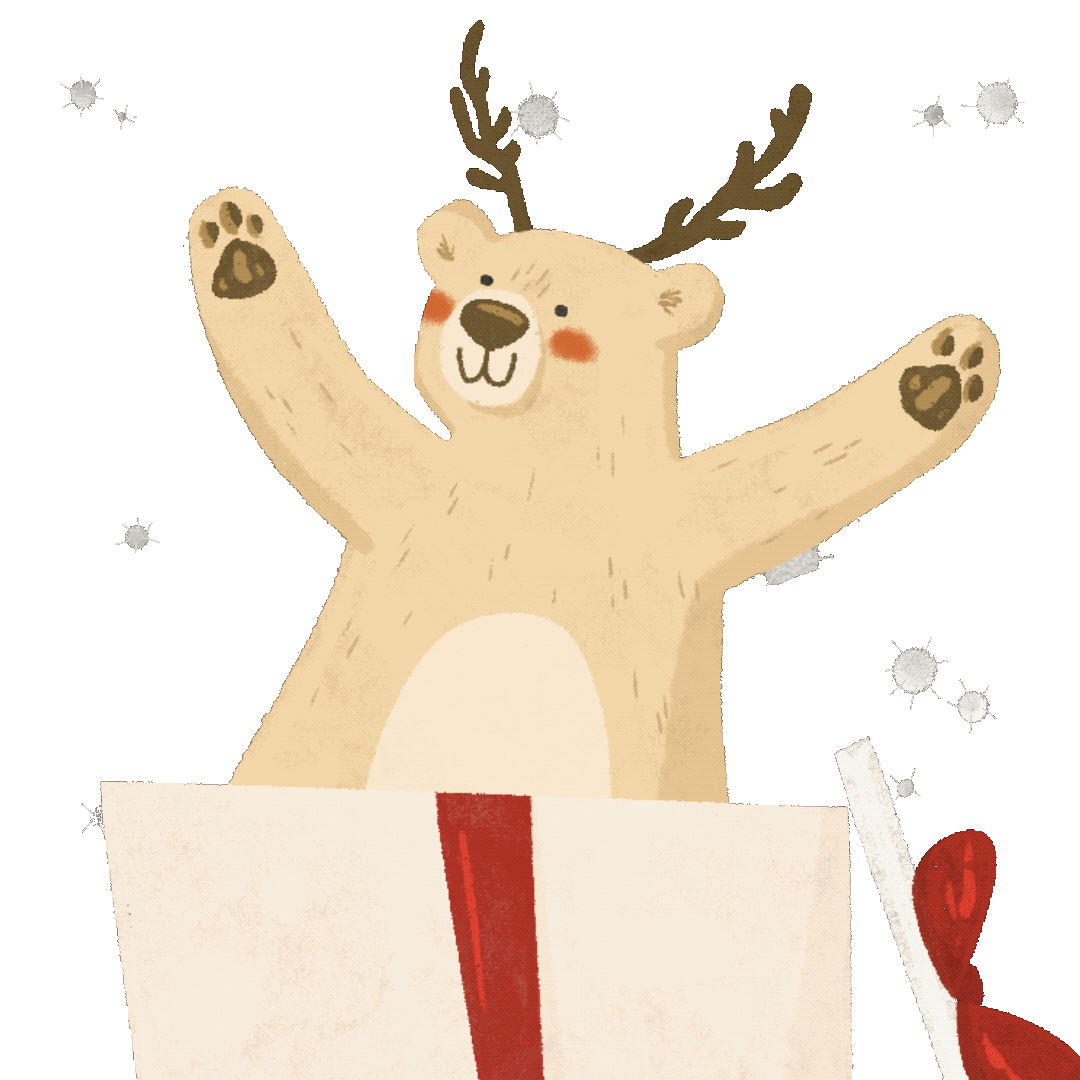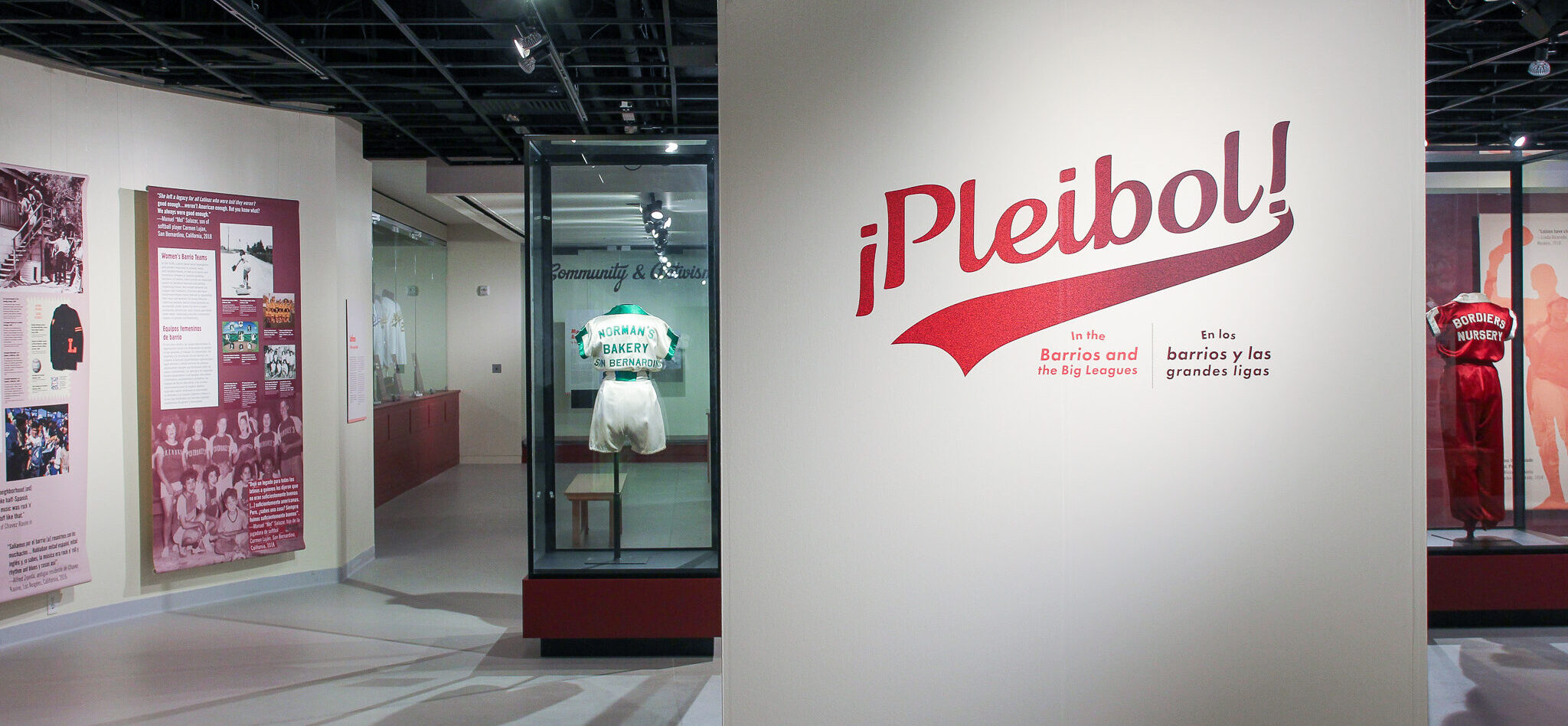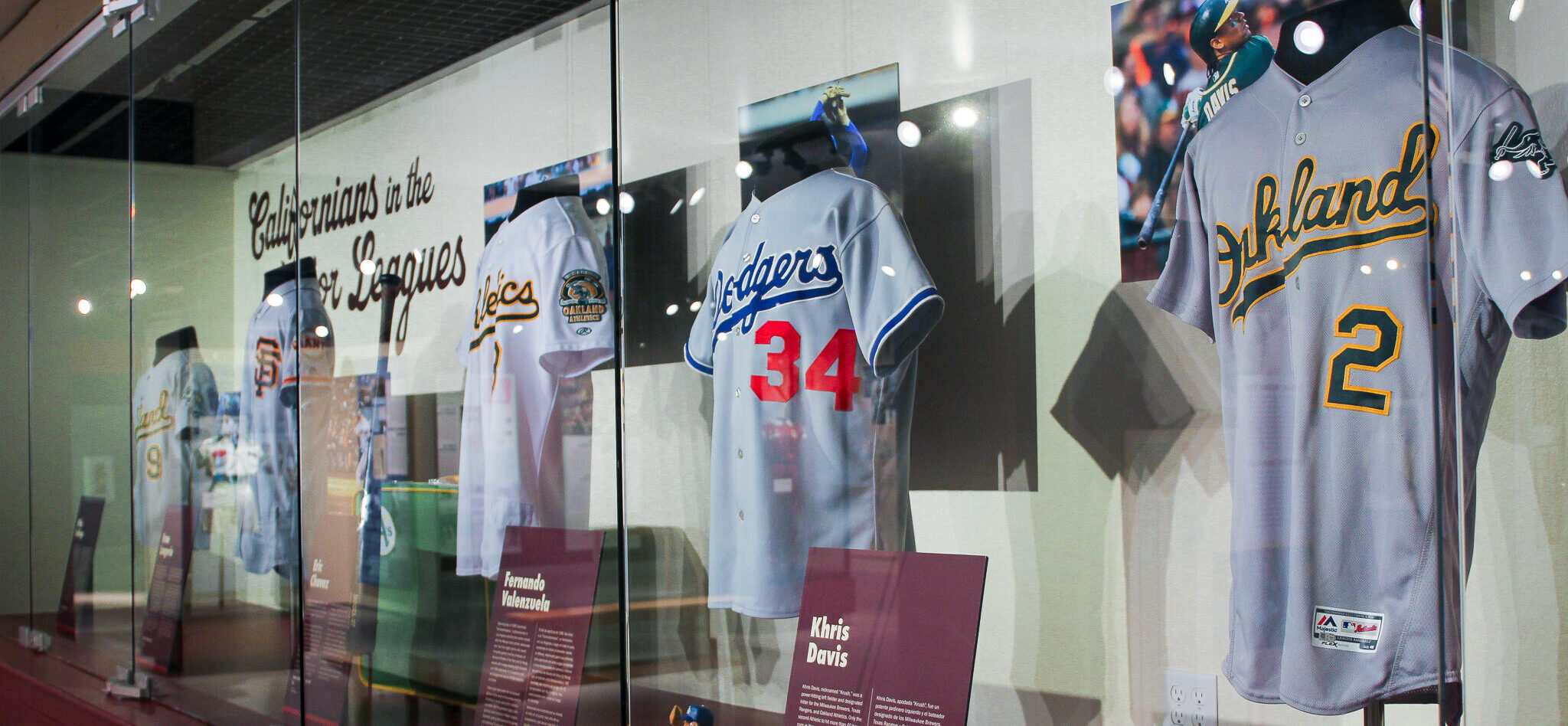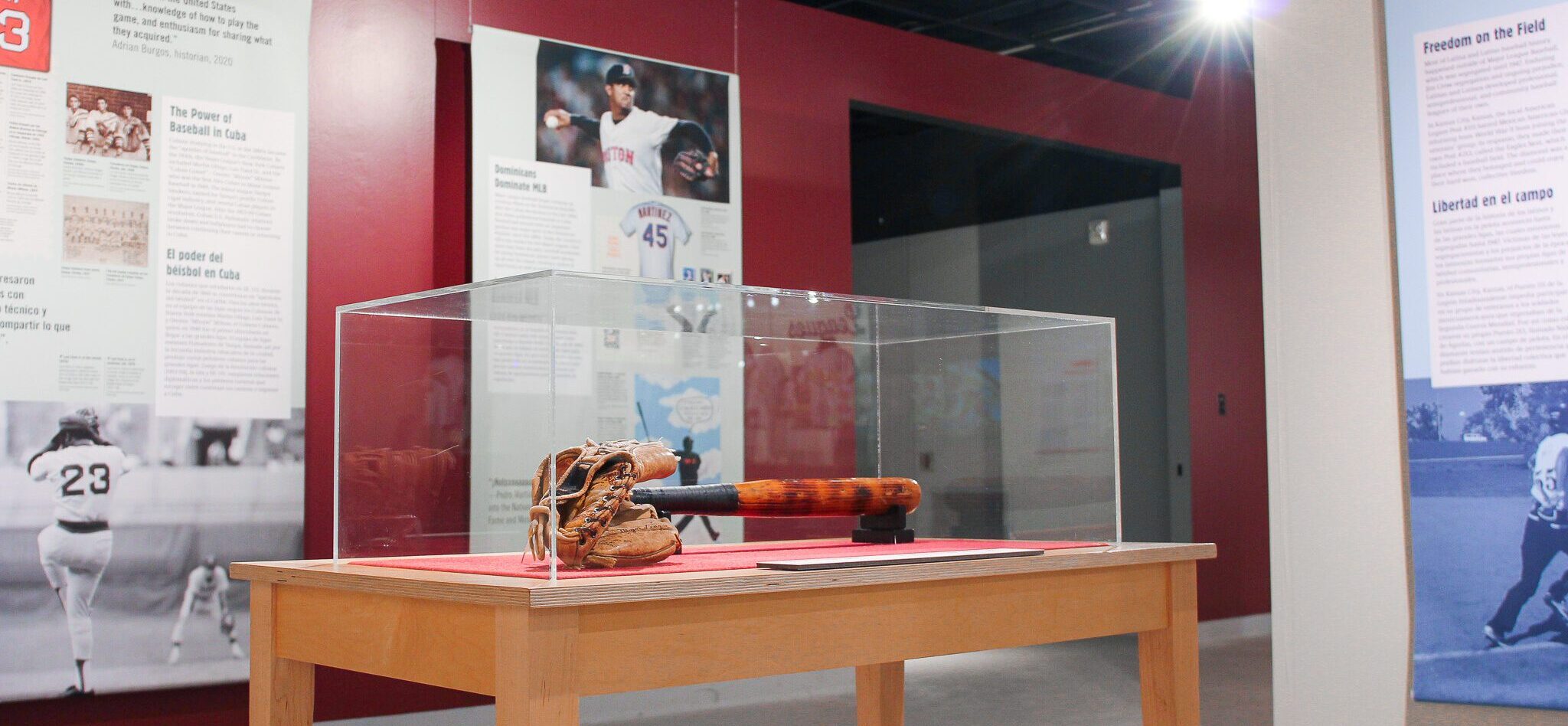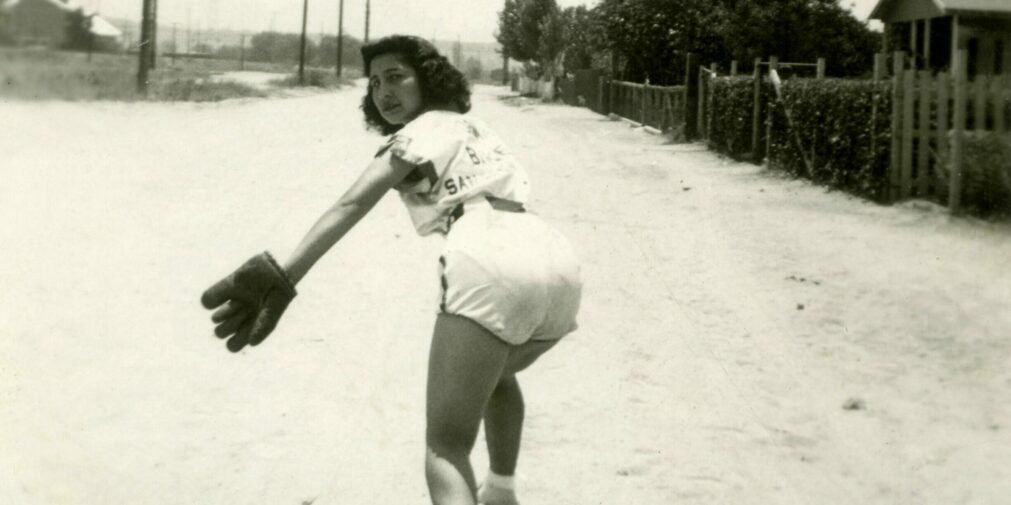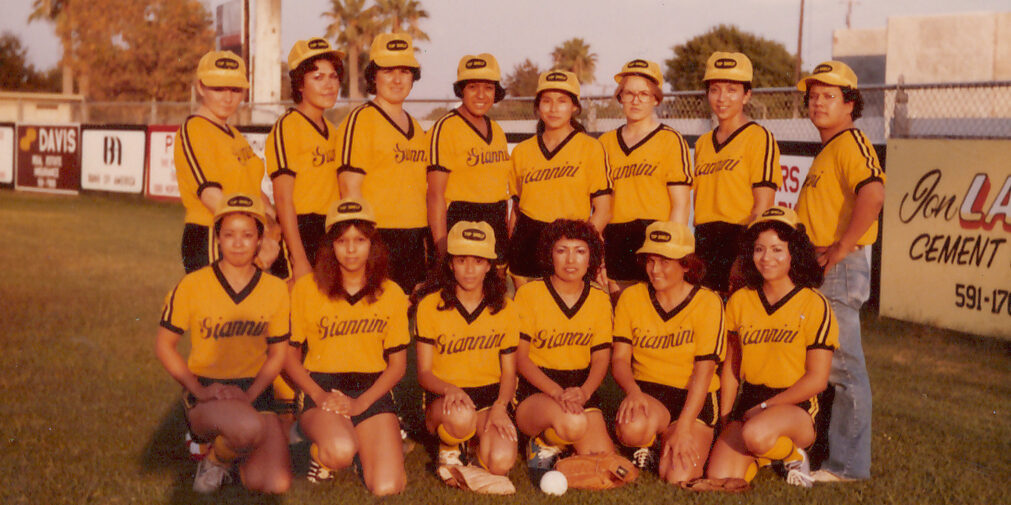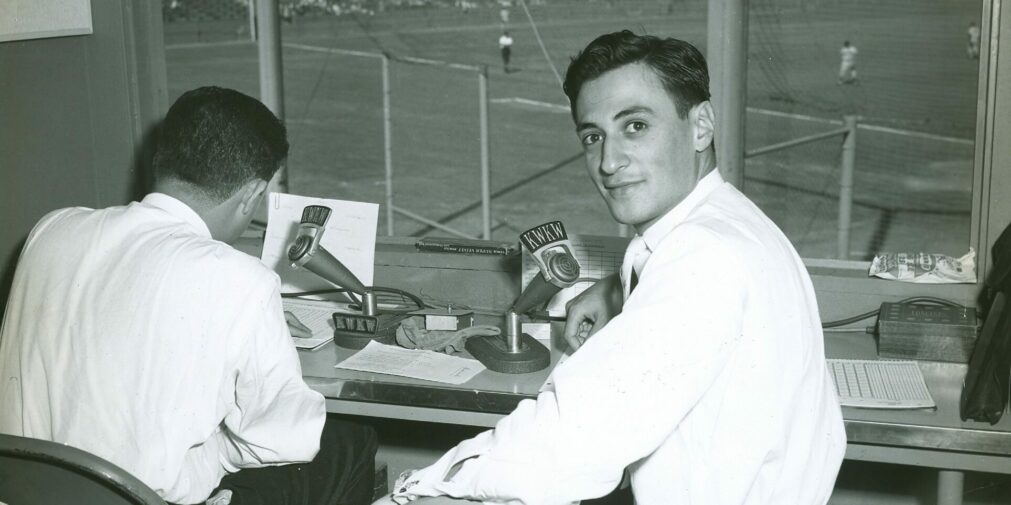¡Pleibol! In the Barrios and the Big Leagues / En los barrios y las grandes ligas
A Smithsonian Institution traveling exhibition
On view October 26, 2024 – January 19, 2025
Baseball has been a social and cultural force within Latino and Latin American communities across the United States over the last century. It is more than simply a game; Latinas/os have celebrated their communities, made a living, and challenged prejudice through baseball. Some used their talents to boost diplomacy around the world. Some offered humor and style from their home countries. Some symbolized the American dream, making it big and giving back in the United States and abroad. Those who seized the opportunities afforded by this global game have changed American baseball, and culture more broadly.
¡Pleibol! In the Barrios and the Big Leagues takes audiences on a journey into the heart of American baseball to understand how generations of Latinas/os have helped make the game what it is today. Their inspirational stories gesture toward larger themes in American history that connect us all, on and off the diamond.
El béisbol ha sido una fuerza social y cultural en las comunidades latinas de todo Estados Unidos a lo largo del siglo pasado. Es más que un mero juego: a través de él, los latinos han celebrado a sus comunidades, se han ganado la vida y han desafiado prejuicios. Algunos han utilizado su talento para fomentar la diplomacia en el mundo. Otros han difundido el humor y el estilo de sus países natales. Otros, símbolos del “sueño americano”, han retribuido a la sociedad dentro y fuera de EE.UU. Aquellos que aprovecharon las oportunidades que ofrece este juego universal han cambiado no solo el béisbol, sino la cultura del país.
¡Pleibol! En los barrios y las grandes ligas es un viaje al corazón del béisbol estadounidense para conocer a las generaciones de latinos que han ayudado a hacer del juego lo que es hoy. Sus vivencias inspiradoras remiten a temas de la historia del país que nos unen a todos, dentro y fuera del diamante.
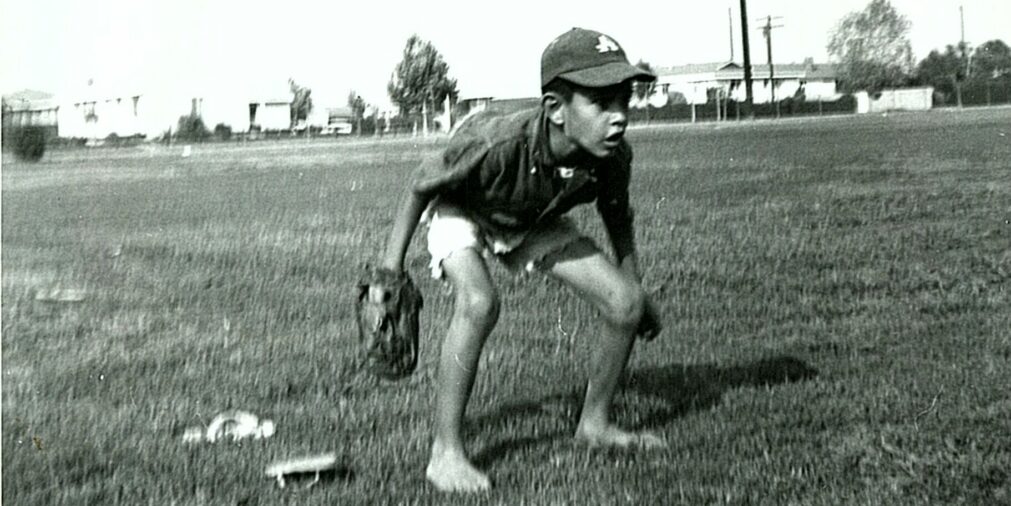
Eddie Martinez fields a ground ball at Bassett Park, La Puente, California, 1961.
Courtesy of Leopold E. Martinez.
Featuring historic artifacts from the Smithsonian and other lenders…
Jersey worn by the late Fernando Valenzuela, history-making Los Angeles Dodgers pitcher
One of MLB’s most beloved players, Fernando Valenzuela was a six-time All-Star during his 11-year run in Los Angeles and a member of the Dodgers’ 1981 World Series team. Known for his skyward glance at the peak of his windup and for throwing a rarely-used screwball pitch, Valenzuela ignited “Fernandomania” and increased Latina/o interest in MLB.
Uniform worn by 13-year-old Marge Villa while playing for East Los Angeles’ Garvey Stars
Villa went on to become a record-setting utility player and one of just 11 Latinas who played professional baseball for the All-American Girls Professional Baseball League from 1943 to 1954. Her Spanish language skills, charisma, and charm also elevated her to a diplomatic role within the league during tours across the Caribbean and Latin America.
The Martinez brothers’ handmade “Peacekeeper” bat and re-stitched glove
No umpire at La Puente, California’s barrio games? Howard Martinez had a solution! Whoever held the “Peacekeeper” bat he made in shop class in 1978 had the final say in disagreements on the field. The Martinez family played with gear they bought, made, and repaired, reflecting the innovative spirit inspired by baseball at the heart of Latino communities.
Legendary broadcaster Jaime Jarrín’s Los Angeles Dodgers playbook and award
Known as “the Spanish language voice of the Dodgers,” Jarrín thrilled Spanish-speaking Dodgers fans with his colorful play-by-play commentary for 64 consecutive seasons, helping build connections between baseball in the barrios and the big leagues.
Carmen Lujan’s Mercury Señoritas Uniform
Facing racial segregation and gender inequality in schools, work, and sports, women in Spanish-speaking barrios in the 1930s carved out makeshift spaces for weekend baseball and softball, organizing teams that formed networks for support and solidarity. For five years, teenage Carmen Lujan played second base for the Mercury Señoritas as they traveled to play other women’s barrio teams.
Ben Sakoguchi’s “The Art of the Game” (2008)
This 12-piece acrylic on canvas is from Sakoguchi’s Mexican American baseball series painted as an expression of his upbringing in the working-class, predominantly Mexican American Barrio Chino neighborhood of San Bernardino. Based on the baseball teams in his neighborhood growing up, his paintings illustrate deep connections between Mexican American baseball and cultural identity.
¡Pleibol! In the Barrios and the Big Leagues / En los barrios y las grandes ligas is organized by the Smithsonian Institution Traveling Exhibition Service in collaboration with the National Museum of American History. This exhibition received generous support from the Cordoba Corporation and Linda Alvarado, and federal support from the Latino Initiatives Pool, administered by the Smithsonian Latino Center.

